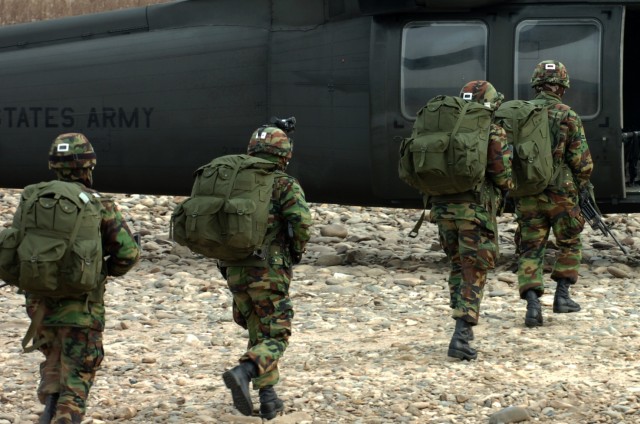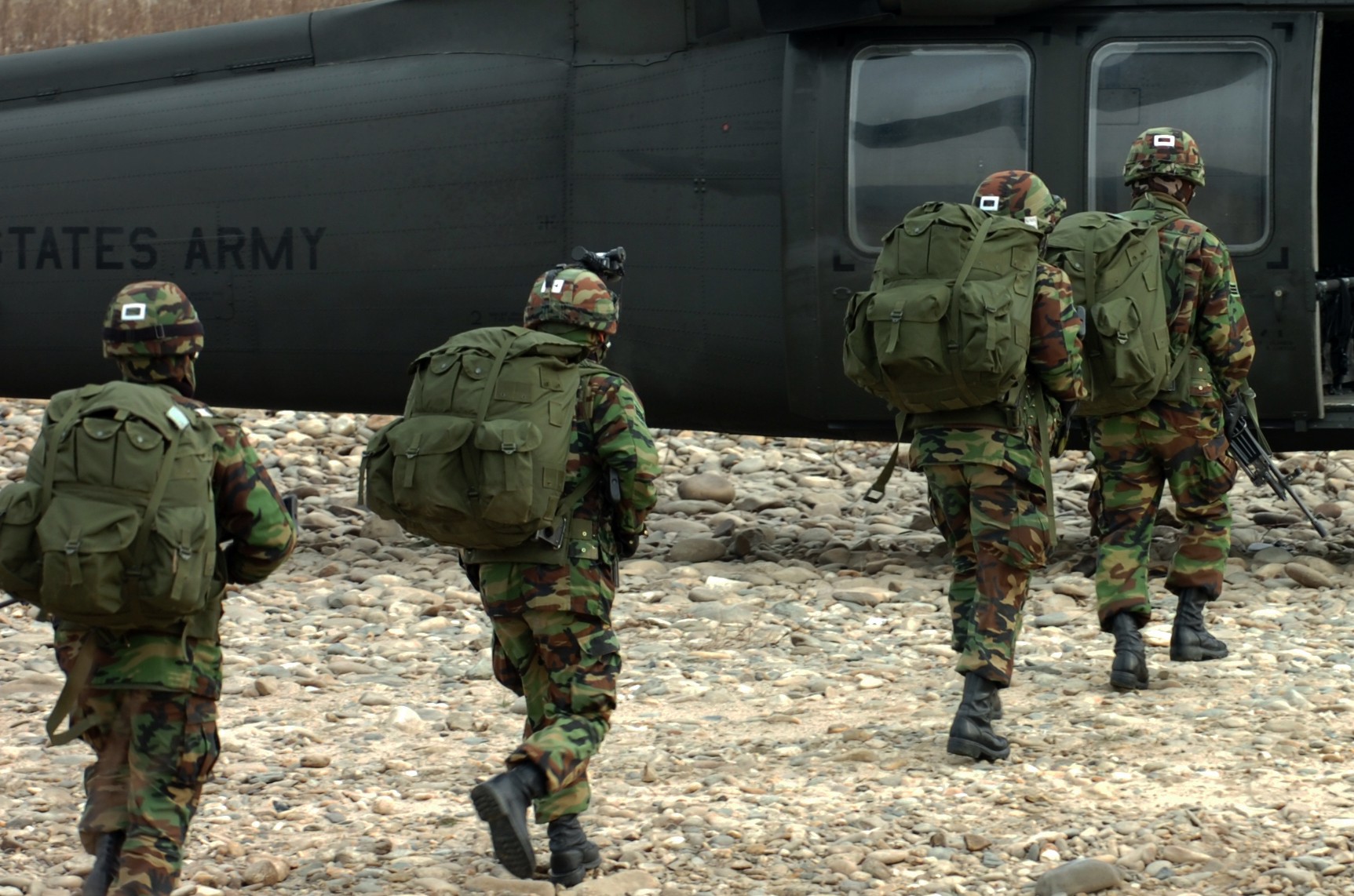TACTICAL ASSEMBLY AREA JERRY - The 3rd Republic of Korea Army conducted a combined training exercise with the 2nd Assault Battalion, 2nd Aviation Regiment, the 3rd Battalion, 2nd Aviation Regiment and the 4th Attack Battalion, 2nd Aviation Regiment Dec. 5 through Dec. 9 at Tactical Assembly Area Jerry near Yeoju.
The combined training exercise took place during the third phase of Task Force Wildcard. The goal of the exercise was to strengthen the ROK and U.S. combined tactical response.
During the mission, approximately 20 Korean and American helicopters carried ROK Army Soldiers on a mission to seize key terrain and to prevent enemy counterattacks.
The air assault training was the first time that United States and ROK forces have conducted a combined Task Force with both countries' helicopters and was the last of three combined missions under Task Force Wildcard.
Other Soldiers from the 2nd Combat Aviation Brigade at TAA Tom communicated with the command team at TAA Jerry to verify conditions on the pickup zone and to communicate with the ground forces.
Conducting full-scale combined training exercises under scenarios like Task Force Wildcard is a big step toward advancing the gradual transition to a Republic of Korea led defense posture, said Maj. Darren W. Buss, Headquarters and Headquarters Company, 2-2nd Avn.
"Strategically right now the U.S. Army is still in charge of the defense of Korea, but in 2012 that relationship is scheduled to change and the Koreans will be in charge of their own security," Buss said.
The five-day training event began with preparations on Saturday and Sunday, followed up by a terrain board rehearsal on Monday, a full daylight rehearsal on Tuesday and the night-vision goggle mission on Wednesday.
Tuesday's rehearsal focused on cold-load training and flying planned routes to make sure that the conditions were safe for the night vision mission on Wednesday.
Preparations for the event began in June 2008 when Lt. Col. Matthew R. Lewis, the battalion commander for the 2-2 Avn., laid out his master plan for the combined air assault.
"The more effective and prepared we are, the better we will be able to keep peace on the peninsula," said Lewis. "If we just practice in isolated units then we may run into problems if ever called upon to defend the country."
Col. Joseph A. Bassani Jr., commander of the 2nd Combat Aviation Brigade, agreed and added that it is imperative that U.S. and ROK forces have an absolute integration as we look forward to 2012 and a ROK led defense response.
"The overall goal for these exercises is to enhance our combined operability for the U.S. and ROK alliance," said Bassani.
ROK military personnel communicated a similar sentiment.
"It is an honor to be part of this ROK-U.S. combined exercise representing the ROK Army," said Cpt. Lee, Jin-ah, the intelligence officer for the 4th Assault Bn., 3rd ROK Army. "It's a great opportunity to get to know the other party of this alliance, and this exercise will help us to understand each other and be ready for real combat situations."
Conducting a combined training exercise is not without difficulties though. Understanding each others military operations is perhaps the most valuable lesson taken from the training event.
"It's very rewarding working with the Korean Army, but it presents a unique set of challenges beyond the language barrier" said Buss.
Trying to manage the combined forces and understand how each military prepares for combat can be a struggle.
"But, working through our differences and the complexities of a combined force makes it more rewarding. The exercise also helps us understand how we can better support the Korean Army when they take the lead,said Buss.
"Through this exercise we are able to clarify relationships, duties and responsibilities to better prepare us for possible attacks in the future."
It feels great to be a part of the process of transitioning from the U.S. being in the driver's seat and at the same time helping the Koreans have the capability to control their own nation's security, added Buss.


Social Sharing